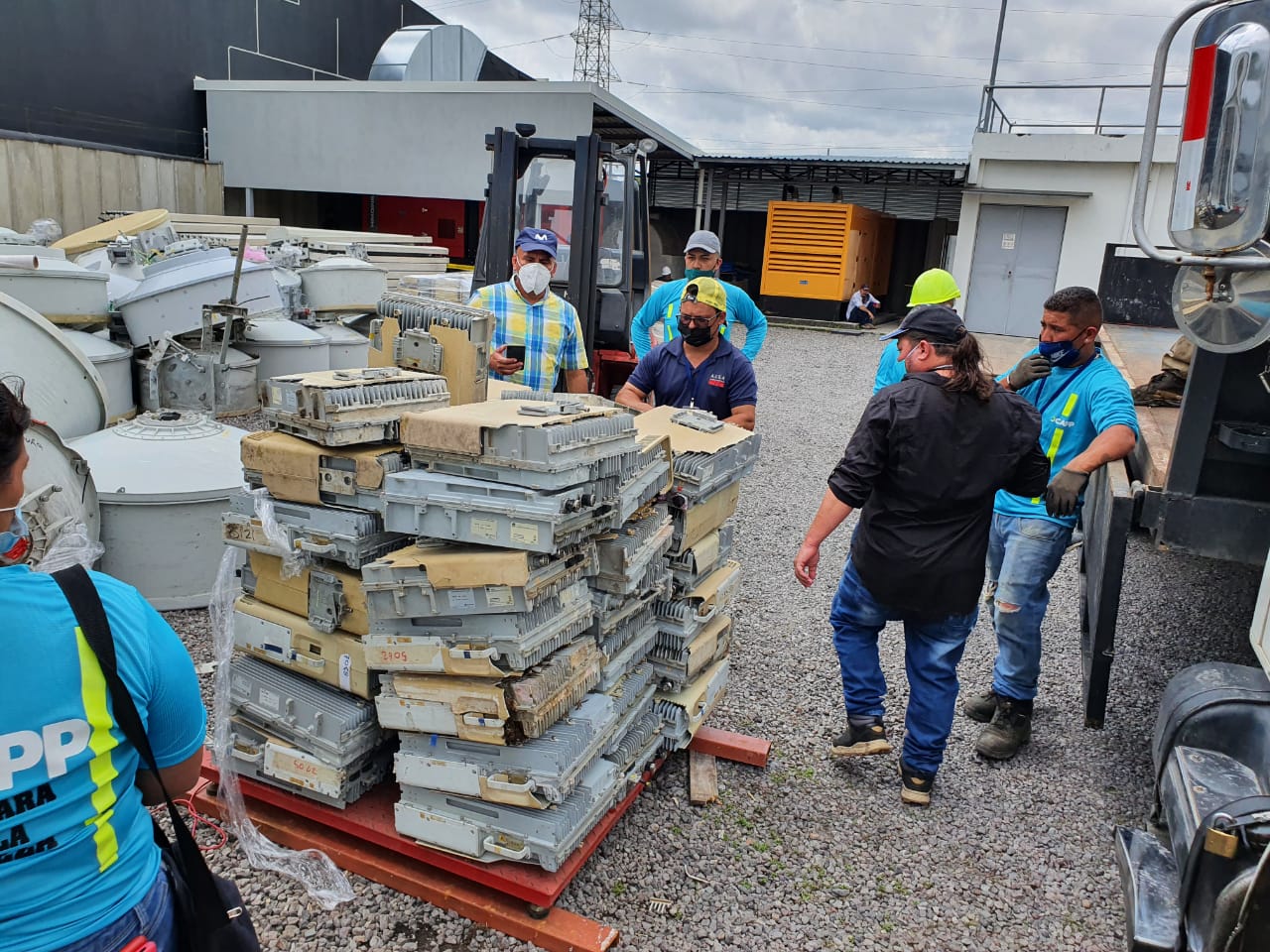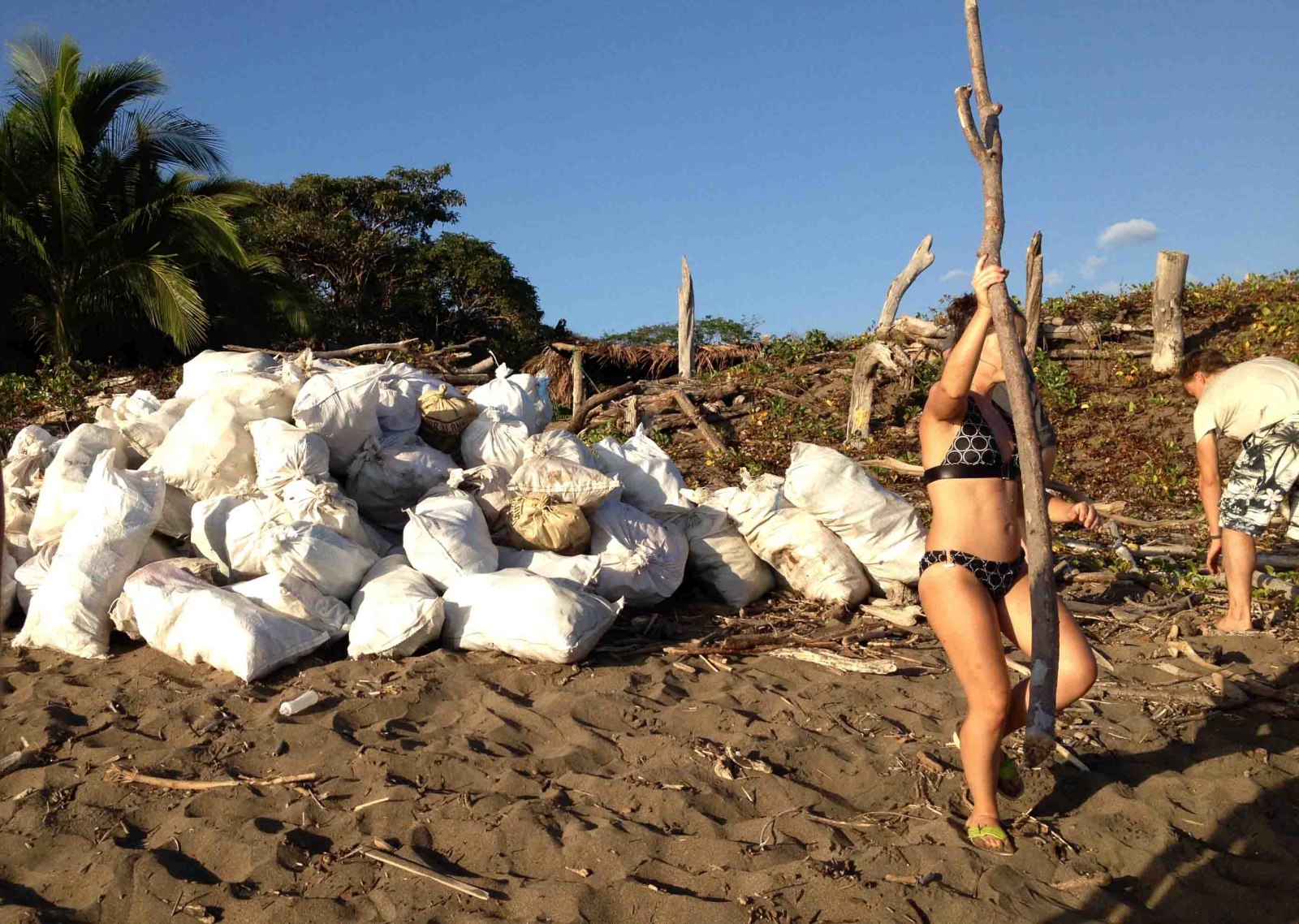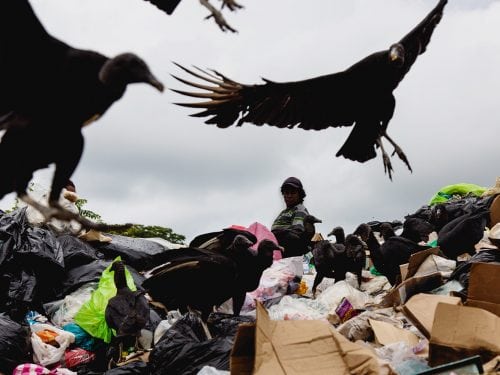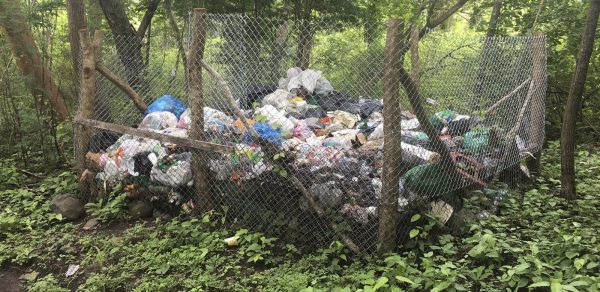
A cell phone, a light bulb or even the washing machine at home stops working and the same questions come up again and again. Do we hide them mixed in with normal garbage? Are we going to throw them away on the vacant lot in the neighborhood? Do we stockpile them in the storage shed?
The answer to these questions is a simple no, but the reality is different. People in Costa Rica don’t correctly manage 92% of waste electrical and electronic equipment (WEEE), according to data from the Ministry of Health with support from the Electronic Waste Project for Latin America (PREAL for the Spanish acronym).
The problem with not disposing of them correctly is that they can negatively impact human and environmental health since they are made with metals (such as arsenic, lead or mercury) and other products that can leak into soil, water and air.
In addition, the lack of knowledge about how to dispose of the devices has taken its toll on Costa Rica, since it is the Central American country that produces the most WEEE per inhabitant (10 kilograms, or 22 pounds, per inhabitant in 2019), according to the most recent data published by researchers from the United Nations University (UNU) and the United Nations Institute for Training and Research (UNITAR).
Despite the data, according to the same report, Costa Rica is one of the countries in the Latin American region that is taking the best steps towards comprehensive management of electronic waste.
In fact, this year in August, legislators reformed Law 8893 on Comprehensive Waste Management through legislative file 20565. With the change, producers or importers of electrical and electronic devices must guarantee the collection of products that they themselves produce or distribute when these devices reach the end of their useful life.
“We have the great challenge of reversing those numbers,” said the director of the Ministry of Health’s department of radiological protection and environmental health, Eugenio Androvetto.
Today, 19% is thrown away together with ordinary waste and 32% is invisible, perhaps dispersed and abandoned in drawers, boxes or sheds at the homes of their former users. The rest remains in the hands of the informal sector.”
Since the reform to the law, some of the main importers, sales businesses and distributors have become WEEE collection points.
They also organize campaigns in conjunction with local governments. For example, Coopeguanacaste will carry out a collection campaign with the Municipality of Santa Cruz this Friday, October 29.
“We are thinking of an agreement with a company to be able to manage this waste permanently and not through campaigns,” explained the municipality’s environmental educator, Katia Gomez.
What are the authorized points where people can take waste? The Ministry of Health and PREAL made a map to locate them. In Guanacaste,there are about 50 points in the 11 cantons.
By clicking on each of the points, you will see the type of waste they receive, their hours, telephone number and location.
If your company is interested in being on the map and joining the initiative, you can click on this link. For more information, you can contact Angelica Zamora at (506) 8845-9665, email [email protected] or [email protected].
To Learn More
What is the difference between electrical and electronic devices?
Electrical devices take advantage of energy from electrical currents in a simple way, for example, a lamp that transforms the energy from an electrical current into light through a bulb. On the other hand, electronics have circuits and do more complex operations, for example, a computer or a cell phone.
1. What are some examples of waste electrical and electronic equipment?
- Large and small appliances, such as washing machines and microwave ovens.
- Telecommunications equipment, like computers.
- Consumer electronic devices, such as cameras.
- Lighting devices, such as light bulbs and fluorescent lamps.
- Power tools, like a drill.
- Electric athletic equipment, like a treadmill.
2. Why do we call them waste and not garbage?
They are called waste because there are still parts in them that can be reused. On the other hand, if we call them garbage, it means that they don’t work at all, which is not always correct when we talk about damaged electrical and electronic equipment.
3. How do I get rid of them and what happens afterward?
- When the device no longer works, store it in a dry place to prevent it from getting wet and damaging parts that can be used. Also avoid places where ants or cockroaches may damage them.
- Evaluate whether you want to repair it, donate it or sell it for spare parts.
- If you don’t want to do any of the above options, you can take it to one of the points on the map.
- There, they will assess whether they disassemble, appraise and export it for recycling or final disposal.







Comments